Resources

We all craft a syllabus for each class, but honestly what is a syllabus and for whom is it written? I hope to expand our vision. The quick and typical answer is: A syllabus is a plan for how we hope to engage students with content and practices of our field of study. Of course, a syllabus is a covenant of learning between teacher and student about the outcomes students might expect from the class. Yet syllabi have many other audiences, and their construction is a daunting task. Over the last two years, I have reviewed nearly a hundred introductory syllabi in my field (Christian religious education). By completing a content analysis of them, I hoped to discover what is at the heart of our shared discipline. I learned that two emphases usually guide classes in my field: attention to the art of teaching and to the congregation as a context for learning. I thank the colleagues who entrusted me with their commitments. As I read them, I was in awe of the quality of teaching. I honor their integrity. Despite this, many of these colleagues expressed anxiety with the way we often think of syllabi. They offered a challenge: We need to make a difference! That means, they said, we need to significantly change the way we construct classes. Above all else, they argued, syllabi are a plan for a journey that impacts lives and the wider world. That is not an overstatement. Person after person told me that “business as usual” could no longer be the case. Classes had to change! The COVID pandemic, the rush of classes online, the inequities revealed, the Black Lives Matter movement, and the continuing violence in the public square against people of color revealed challenges that have redirected the whole class-planning process. We write syllabi for students. We make our expectations and our commitments clear. We write syllabi for our colleagues, often following a prescribed form, to demonstrate how a class fits into a school’s curriculum. Moreover, we write our syllabi for colleagues in our guilds to show how each of us stands within the traditions of a field of study. But my colleagues told me that syllabi need to be more – much more. They have a wider audience and impact. Syllabi are a concrete and sacred expression of our vocation of teaching. They embody hopes for the future. Syllabi are our efforts to connect students, fields of study, a curriculum, and outcomes that make a difference in the world. Through our teaching, we want to influence the ways students live their vocations and interact with the wider worlds of church, faith, ministry, and public service they touch. We each make choices. We include some foci and ignore others. We emphasize some practices of learning – reading, study, analysis, creative projects, oral presentations, or written papers, to name a few. We seek to embody the wisdom and practices of a field of study. But more! From wherever we are located, from the wisdom of academic traditions in which we are embedded, and from faithful efforts to live a vocation, we join with our students on a journey. We choose what we will emphasize. We choose who we will serve. We choose what difference we will make. It is obvious, isn’t it? A syllabus is a concrete reflection of our hope to make a difference. Syllabi are filled with our passion for our field, with the liveliness of the worlds our students inhabit, and with our best efforts of teaching. Teaching is not the replication of what we did before, nor honestly what the authorities in our fields say it is. Teaching is our calling, and the syllabi, our promises. By reviewing over a hundred syllabi, I saw similarities that define a discipline, I saw practices of good teaching, I saw colleagues struggling, but I also saw a passion to make a difference in a world that needs teachers and great traditions of hope and wisdom. Just as books and articles shape dialogue and influence policy, even more so do syllabi. Teaching cannot be “business as usual.” What difference do you hope to make?
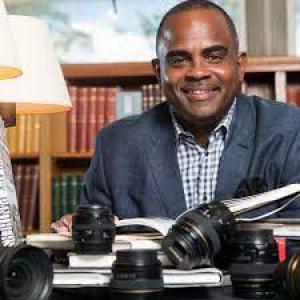
We get that email from the library staff asking for our book selections for our upcoming course. We have taught the course before, so the library is kind enough to send the list of books we used the last time. In most cases we use the same books, but from time to time we add a new selection. Our courses look the same, they sound the same, and in many instances we teach the same books that we were taught. We can become complicit in petrifying the canon. Even if it is a new canon, it becomes constrictive and many of our courses privilege reading. We start with “books.” What if we started with the visual, sound, and look of the course? What if we were bold enough to do something we had never dreamed of doing in a course, designing experiences that were inherently transformative? I propose that if we are to do the new, the challenging, the daring, the unusual, we have to expose ourselves to the new in our daily life and practice: my wife and I dared to kayak! We had never kayaked before but as our practice is to do the new in the schools that we serve, we are doing new things that will make us new. Things that will expand us and transform us. We took an REI Class on kayaking at Sweet Water Creek State Park in Atlanta. The park is only thirty minutes from our home but when we’re on that lake it feels like we’re miles away. In doing the new, we are becoming new. Becoming new naturally pushes me to try the new, to experiment and develop classes that take students out to kayak with me. While we might not literally kayak, we will do the new, the different, the exciting. The more we do the new, the more we will try the new. Try something new and exciting that takes you out of your comfort zone and see how these experiences transform your teaching!
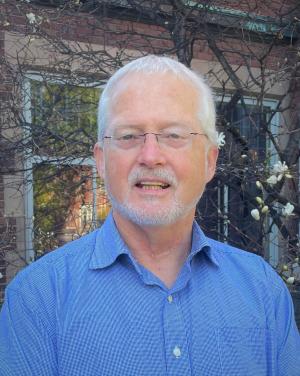
“The essence of metaphor is understanding and experiencing something unfamiliar or an abstraction in terms of something familiar and concrete. Thus, our language is an incredibly intricate web of definitions of one thing in terms of another.”[1] Mary Ylvisaker Nilsen’s expansive definition of metaphor applies to teaching—helping students understand unfamiliar subjects, defining one thing in terms of another, communicating abstract information. Good teaching, then, involves the use of good metaphors. So, let us apply an over-arching, controlling metaphor to the life of Martin Luther. It’s a metaphor intended to interpret the sixteenth-century German reformer for college and seminary students—learners who are aware of the Olympics and YouTube and need to know more about history and the history of theology. The metaphor comes with readily accessible videos, so the teacher can provide students, whether they snowboard or not, a visually impressive image with which to define “one thing in terms of another.” The hope here is to describe the Reformer’s life in terms of risk (edges are inherently dangerous) and unintended consequences (he did not intend to split the church). An edge can also be a threshold and an entry to something new (like the modern era). The presentation of Martin’s life, then, rises and falls, twisting and turning, carried forward by forces he did not create or foresee. There’s another connection here, for a creative teacher: our present time of pandemic, insurrection, and big lies. We confront dangers all around. Unforeseen outcomes startle us. Something new seems to be emerging in our world. If so, Martin Luther can help us. His remarkable life exemplifies wisdom and confusion, courage and cowardice, faith and doubt. A critical engagement with the life of Martin Luther is not simply a journey into the past of long ago and far away. Martin’s successes and failures have much to teach us now. “Martin Luther, Shaun White, and a Life on the Edge” Martin Luther and Olympic snowboarding—not often paired together. Or not often paired together enough. When an elite athlete drops into the half-pipe, there’s crazy risk everywhere, with no turning back. Picture Shaun White at the PyeongChang games in 2018.[2] He had to come down that mountain, one way or another. White’s incredible run ended in epic triumph, but it easily could’ve ended in the hospital or the morgue. No matter what, he had to come down. The whole business is fraught with peril. It takes no small amount of courage to seize such a moment, accept the risks, push through to the end. Edgy, on so many levels. Kind of like Luther’s life, when he came careening down the half-pipe of history. To survive, he pulled off some amazing stunts; improvising at break-neck speeds, keeping his balance (barely), figuring it out as he went. Crazy risk everywhere. He didn’t intend to shred the Reformation mountain, but once Luther dropped in, he could not not finish the run. A life on the edge if there ever was one. However, there’s a huge difference between Mr. White and Mr. Luther. Shaun intentionally did what he did that day. He practiced and trained—even invented a move for the occasion. Martin, however, had little or no idea what he was getting into. He spent much of his life doing what good Saxon boys from good Saxon families did in those days. A smart kid, he went to the schools chosen for him by his Dad. He went to college a couple of towns over, at the University of Erfurt. He studied law; a degree that would make his Papa proud. An obedient son if there ever was one. And Luther was also a dutiful son of the church—the only church in town, the Church of Rome. Eventually, Martin followed the lead of his Mother; his Mother Church, that is. He became an Augustinian Brother. And a priest. He sought comfort in the bosom of the Church—praying, studying, preaching, and teaching. All of that because he’d taken a vow to obey his superiors. The responsible Augustinian brother and junior professor dutifully put one foot in front of the other. He didn’t know he was getting close to any edge. He didn’t even know there was an edge. And then he walked off it. [1] Mary Ylvisaker Nilsen, Words that Sing (Des Moines, IA: Zion Publishing, 2012), Kindle Edition, location 2265ff. [2] https://www.youtube.com/watch?v=he03dVkhLTM Photo by Philipp Kämmerer on Unsplash
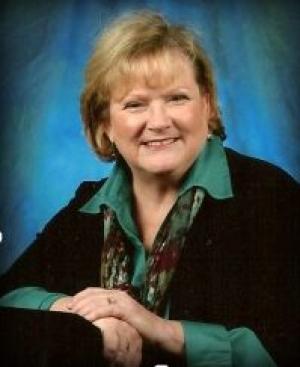
Vice president of the United States, Kamala Harris is known for wearing Chuck Taylor Converse sneakers and pearls that are emblematic of her historical significance as the first African American and South Asian woman to assume this high office. Girls and women everywhere donned the shoes and pearls to celebrate “Chucks and Pearls Day” on the day of her inauguration, January 20, 2021. Chucks and pearls have surplus meaning for VP Harris, and I would argue, for theological educators as well, and not just in the US context. I am an American teaching at a seminary in Canada where I find a strong investment of support for Harris’s achievements and optimism about what her leadership brings to the global stage. Is it sexist to focus on what women in leadership wear? One could look at it that way. The infatuation with Bernie Sanders’s mittens, however, might even the score. Conversely (pun intended), one could find inspiration in the “Twenty Pearls,” the esteemed early twentieth century founders of Harris’s historically Black sorority, Alpha Kappa Alpha Sorority, Inc. Biblically speaking, pearls are symbolic of wisdom gained through experience, and their value is juxtaposed against the swine of the world. Even after thirty years of teaching I seek confidence boosters to help me in the classroom, whether I literally or metaphorically “wear them.” Those ‘pearls of great price’ who came before me and braved male-dominated theological education, and my sister-colleagues who witness against sexism, racism, and classism, are confidence boosters for me. When there are confidence busters (like a vengeful comment on a course evaluation, or a double standard toward female faculty), the boosters offer examples of tenacity. When I feel I need to challenge a student on an unexamined idea, I muster the courage and grace to do so from the pearls in my life. If I feel spiritually or intellectually dried up, I go to the wisdom bearers of my tradition. The Converse sneakers were Harris’s go-to on the campaign trail. She was “laced up and ready to win” (“Why are Women Wearing Chucks and Pearls Today?”). Harris viewed the shoes as energizing and as telling a story about who she is as a well-grounded, everyday person. She saw them as a symbol of universality, an equalizing force, pointing toward the unity she seeks for the country. Harris has more than her share of detractors, but in her poise, one can see deep strength and steadfastness. The political arena, like the classroom--also political-- puts one in a vulnerable place. Confidence and agility are two invaluable personal resources in both spaces. And in this world of virtual and online teaching we especially need flexibility and an embodied, “real” presence. Teaching has a “ready to hit the ground” quality that requires quick movements and agility—dodging, shifting, and taking chances. Confidence comes with comfort in one’s body bringing a presence to the space. In the power dynamics of teaching and learning, confidence is not to be confused with cockiness or authoritarianism. It is the willingness to offer hospitality, to say under one’s breath, “Yes, I have a PhD which gives me knowledge and expertise in my field, but I still wear sneakers. I am a learner too.” Confidence is the readiness to be challenged by students in order to calibrate one’s own thinking. It also has the quality of standing firm when necessary. For example, sometimes students do not want to read something they disagree with or that causes a visceral reaction. I might persist with the assignment, knowing that it will hone our practice of discourse with those holding different views and allow us to explore what those reactions teach us. Such discourse is important in the democracy Harris defends. Does this mean that all theological educators ought to go out and buy Chucks and pearls to be in solidarity with our new VP? No. It isn’t about stuff, or that we need a good luck charm to help ward off evil or help us cope with the passing criticism. We do, however, need reminders that the pearls who have guided us are yet still with us and that we have within our souls (pun intended) the ability and agility to embody good teaching.
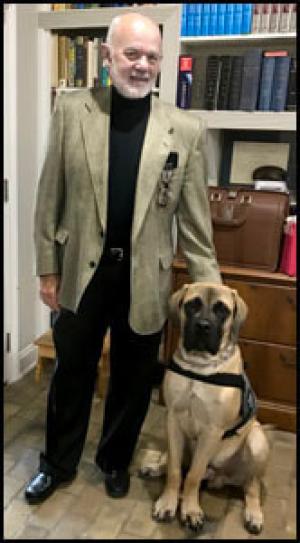
As the Jewish Studies Professor for my department, I teach an undergraduate course in the Holocaust (Sho’ah) every other school year. The remote format of the course now consists of weekly assigned readings and the edited version of class lectures gleaned from earlier years of in-class instruction. Students submit short weekly responses to the readings, including personal viewpoints and questions requiring additional information. The enrollees are a good Louisiana gumbo of Black, Brown, and White, male, female, and “other.” Two weeks ago, I received responses to essays on “The Medieval Treatment of the Jews” (book burnings, forced baptism, conversion sermons, blood libel, host desecration). Their responses largely expressed surprise that they had never been taught about these specific modes of mistreatment meted out to Jews in Europe. But there was one component that surprised and touched me personally. Although we had never discussed it, they seemed to sense how emotional Yom ha-Sho’ah (Holocaust Memorial Day, Jan 27) would be for me, and many expressed words of kindness and consolation. Their gesture moved me to respond with the following email of thanks. The national motto of Israel is lo’ ‘od, Hebrew for “Never again.” As Jews, we read and study a version of history that is not the same as the version other school children in America study. We don’t sing, “In 1492, Columbus sailed the ocean blue.” For us, the events of 1492 are singled out as a cause for mourning, a year during which we learned that not even conversion to the dominant Christianity of our world was enough to transform us into persons whose value is equal to that of our fellow citizens. It is understandable that the typical history curriculum in most of our schools does not focus on these matters of life and death to a tiny portion of the population. They are matters of no serious consequence to anyone other than the minority group of Jews. But if we watch in horror the slow and agonizing death of George Floyd or the senseless murder of Alton Sterling in our own beloved Baton Rouge, our responses can be either-or. Either we turn away and try not to think of what happens, or we vow to join the effort to create a world in which such evil can no longer be tolerated. In this struggle, the human capacity to empathize is essential. If the only persons who understand the pain of a class of people are those who themselves are in that category, hatred and pain never cease. Only the victims care, and their cries go unheard. Small, insignificant acts of meanness somehow morph into large and debilitating experiences. Over time, the world becomes darker and more frightening, for we have learned that we must fear each other. What is the answer? I cannot be other than who I am. But if I can only sense and react to treatment that is harmful to Jews, or old professors, then bad stuff done to “Others” floats by me right in front of my face—and I do nothing to combat it. This must not happen! Even at this later stage of my own life, I must daily renew my determination to expand my vision ever wider, to open my heart to the conditions of life that all people face, not just folks like me—old, white, male, Jews – all people. “To see” must also become “to perceive.” “To hear” must be “to understand.” I must be responsible not just for myself alone, but for everyone who is part of my human family. Here is a major part of my reason for entering into dialogue with people like you who are young, probably majority Christian, and cool. In other words, nothing at all like me. Yes, I need you to be “woke” about Judaism and our unfathomable experience during a truly awful period of history. But I also believe that it is incumbent on me to learn about all of you, to care about you as if you were my own family, because that is exactly what you are. Indeed, if Judaism teaches only one lesson, it is that we are all from the same father and mother and thus a single family destined either to live and care for each other or, God forbid, to hate and destroy each other. I choose life and caring, and I ask all of you to join me. Ken yehi ratzon. “May it be God’s will.”

There’s a case to be made for rigor in teaching, which is a practice grounded in both art and science. Rigor in instructional design is particularly necessary for online instruction. The more we learn about the cognition of learning, most notably from the neurosciences, the more we appreciate that our ways of teaching must align with the ways of learning. While we may like to believe that learning is natural and intuitive (and it is to a certain extent) two insights from the neurosciences are that (1) learning is not easy (it takes a lot of energy and attention), and (2) learning follows certain pathways—from the cellular level to metacognition, or from organic brain processes to the awareness of mind. Rigor in instruction calls for following specific schemas to aid the learning process. Educational psychologist Robert Gagné pioneered the science of instruction. His schema for the “conditions of learning” demonstrates that different instructional methods should be used according to the demands of varied learning challenges (“A blinding flash of the obvious,” you say. Maybe, but he said it first!). He categorized distinct “varieties of learned capabilities” or categories of learning. These represent the purposes for which teachers provide instruction: To impart basic intellectual skills (“procedural knowledge”) To extend verbal information (“declarative knowledge”) To facilitate development of cognitive strategies (metacognition) To develop attitudes (values, affections, attitudes) To enhance physical motor skills (competencies) Different internal and external conditions apply for each type of learning. For example, with cognitive strategies students must have a chance to practice developing new solutions to problems; to learn attitudes, the learner must be exposed to a credible role model or persuasive arguments. Therefore, it is necessary to know what kind of learning we are seeking to bring about. In addition, Gagné’s theory outlines a schema of nine instructional events and corresponding cognitive processes in the teaching-learning process: Gaining attention (focus and reception) Informing learners of the objective (expectancy and motivation) Stimulating recall of prior learning (retrieval and connections) Presenting the content (“stimulus”) (selective perception) Providing learning guidance (semantic encoding) Eliciting performance (responding and acting on the new knowledge) Providing feedback (reinforcement) Assessing performance (retrieval) Enhancing retention and transfer (generalization and application) These steps provide the necessary conditions for learning and serve as the basis for designing instruction and selecting appropriate media, methods, and learning and assessment activities. Gagné suggests that learning tasks for intellectual skills can be organized in a hierarchy according to complexity: stimulus recognition, response generation, procedure following, use of terminology, discriminations, concept formation, rule application, and problem solving. The primary significance of the hierarchy is to identify prerequisites that should be completed to facilitate learning at each level. This learning hierarchies provide a way to organize the learning experience in online course design. Example The following example illustrates a teaching sequence corresponding to the nine instructional events for the objective. In this example students are guided in a sequence to learn the concept of triangulation in relationships. Gain attention: show a variety of examples of triangulation (case study, cartoon, film, dialogue script). Identify objective. pose questions: “What function does triangulation serve?” “What are the causes of triangulation?” “How may triangulation hinder a leader’s effectiveness?” Recall prior learning: review definitions of triangles. Ask students to share examples of triangulation from personal experience. Present stimulus: present refined definition of triangulation. Guide learning: present examples of how triangulation is caused and motivated; how to identify it; its effect on functioning in relationships and situations. Elicit performance: direct students to create different examples of triangulation in work, ministry, or family situations. Or direct students to find and share triangulated scenarios in films, stories, news features, etc. Provide feedback: review student examples as correct or incorrect (or to what extent they are correct or not). Assess performance: provide feedback in the form of scores/grades and remediation. Enhance retention/transfer: review examples and non-examples of triangulation and ask students to identify qualities for identifying whether or not the example fits criteria for triangulation. Summary Effective online instruction requires rigorous application of pedagogical principles in course design. Gagné’s schema of “instructional events” is an effective model for organizing online course design. Different instruction is required for different learning domains and their outcomes (intellectual concepts; attitudes, values, and affections; skills and competencies). Experiences of learning operate on the learner in ways that constitute the conditions of learning. The specific operations that constitute instructional events are different for each different type of learning outcome. Learning hierarchies define what domains are to be learned and the sequence of instruction necessary to bring about their outcomes.
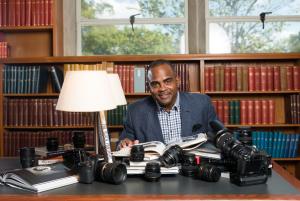
On Wednesday, October 7, 2020 we had our first gathering with Victor Wooten and the fifteen scholars who are privileged to be a part of this cohort. Victor asked us, “Why are you here?” Many answered while I listened. I didn’t speak during the formal two hour period, I listened. I hadn’t intended not to speak. Prior to the gathering formally beginning I was my normal raucous self but when Dr. Lynne Westfield called us to order my posture changed. If would’ve answered the question Victor posed I would’ve said: “I am here because I love music. I am here because I use music in all of my classes. I am here because I thank improvisation is the key to living full and adventurous life. I love the guitar. I love the bass. I am grew up listening to Larry Graham, Bootsy Collins, James Jamerson, Jaco Pastorious and so many more. I am a true fan of Stanley Clarke, Marcus Miler, Chritian McBride and Victor Wooten. Victor Wooten is not simply a musician but to me he is a mystic, a teacher, a scholar and brilliant. Whenever Victor Wooten is in town I am there to be a part of the experience.” Everytime Victor comes to Atlanta I am there (the links below are to photo galleries of two of my recent experiences at a Victor Wooten concert). Victor Wooten at the Variety Playhouse in Atlanta, GA https://flic.kr/s/aHskZV22bG https://flic.kr/s/aHskzJKr6A I was in this cohort for the experience. I wanted to experience what it meant to be with Victor and my colleagues to do this work together, to grow together and reimagine what teaching could be for us in the present age. [embedyt] https://www.youtube.com/watch?v=GONEnFyj73w[/embedyt]
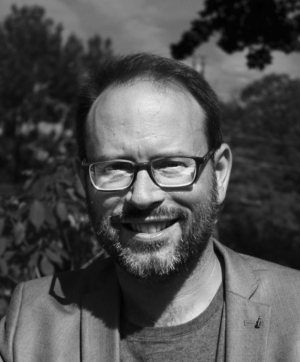
When I go to work in the morning, the first thing I do is read the Bible. I read a bunch of commentaries, take a bunch of notes, then prayerfully reflect on the text. Then I set to work coming up with a meaningful and compelling way of communicating my interpretation to my listeners. Then I lift the piano lid. You see, I’m a composer of sacred music. At its heart, my job is to present an interpretation of Scripture to my listeners in a way that is interesting, convincing, and spiritually valuable. Unfortunately, few Christians ever hear my sacred music. That’s because I don’t write choral anthems or praise songs. I write sacred concert music: classical works that responds to themes, ideas, and texts from the Christian tradition. I’ve written a piano trio inspired by the book of Job, a song cycle that sets Rilke poems, and a brass quintet that explores the concept of perichoresis. (Humblebrag: of this piece, Walter Brueggemann wrote to me: “I am not a great theologian but have pondered “perichoresis” for a long time. This is the finest exposition of that thick idea that I have encountered.” Be still my beating heart!) Now, if I wrote a lot of choral music, I wouldn’t be complaining nearly as much. But today, most of history’s great church music composers face the same problems as me. While we do hear choral works by Bach, Handel, and Mendelssohn occasionally on Sunday mornings, the place where we usually encounter their sacred music is in the concert hall. This is an example of a strange irony: though most of us have nearly unlimited access to the corpus of great sacred music–either live or on Spotify-we Christians rarely have the chance to intentionally explore its spiritual value in the context of Christian community. As a result, we are missing out on the many ways sacred music can contribute to our lives as Christians–beyond its role in worship. In this post I’d like to provide a case study of a way that a different approach to sacred music can contribute to our work as educators. First, take about 15 minutes to listen to three new musical settings of Psalm 148 (scroll down for texts and info about each setting). Each was written in 2019 by a contemporary composer representing a different Christian tradition: Roman Catholic, Evangelical Lutheran, and Armenian Apostolic. Now that you’ve listened, let me ask you a question: which of these pieces interpreted the psalm correctly? Obviously, this is not the right question to ask. Yet it’s a familiar one, as it’s the one that so many students initially bring to the task of Biblical interpretation. And as educators, we know that ridding a student of this hermeneutic habit is the very first thing we need to accomplish in our classes. Listening to these three musical settings makes this easy. Each piece is an authentic, honest, and personal response to a rich and mysterious text. Each provokes us to think about the psalm in a completely different way: not just encouraging us to provide different interpretations of the psalm, but to ask completely different kinds of questions about it–and of ourselves. Heard back-to-back, the three settings testify incontrovertibly to the possibility–and, I might add, the necessity–of complementary, mutually-enriching interpretations of the same text. If we are going to teach the next generation of pastors, theologian, and laypeople, we know that these are the attitudes toward Scripture that we need to promote. More than anything, we need to convince our students to devote themselves to a lifetime of continuous exploration and re-exploration of our tradition. Beyond that, we need to encourage them to develop an attitude of humility, an awareness of the contingent nature of our own interpretations, and the courage to ask complex questions and follow them where they may lead. Sacred music helps us accomplish these goals. It opens up the field of interpretation by inviting us to engage with the Bible in ways that are not ideological, simplistic, or narrow, but instead subjective, affective, and open-ended. But this can only happen if we think creatively about new ways to use it in our classrooms and our churches. My new organization Deus Ex Musica, which developed the project culminating in the videos you watched, is my own humble attempt. For more than a millennium, composers have given us unique, powerful, and provocative musical interpretations of Scripture. They continue to do so today. In a world that increasingly promotes simple, ideologically-driven solutions to problems, I think sacred music has the potential to remind us that our tradition is rich, mysterious, and resistant to easy answers. Whether you are an educator, pastor, or layperson, I encourage you to seek out opportunities to explore the ways it can contribute to your ministry and your life of faith. Thanks for listening!

I've been sketching, drawing and painting since I was a child. Sometimes people ask, "How do you draw so well?" On occasion I respond, "When you do something every day for a long time you can get pretty good at it." I've been teaching online for 22 years. By now, I've gotten pretty good at it. Here are 15 things that work in my online courses, and three that didn't. 1. Fully outlining the course using a mindmap. Drafting the outline of the course in detail before I even create the online course shell saves hours of guesswork. The branching logic of a mindmap also helps me avoid superfluous content. This is a very efficient brainstorming, planning, and design method; by now I can outline an entire course within one hour. 2. Creating a clean interface design for students. Striving to view my course site from the perspective of the student helps me keep the course design clean, uncluttered, and with a logical flow that is intuitive to navigate. I remind myself that "figuring out your course site is not an assignment." Adding consistent visual cues helps students navigate the course site, recognize standard segments, and important items. 3. Creating an atmosphere of both welcome and challenge. Reminding students that they are taking a "course" and not a "class" helps them appreciate that online learning is a different experience than the classroom. Setting the atmosphere includes an "introduce yourself" forum which can include sharing common experiences, using humor. When a student posts a great response, I will sometimes give them "1000 extra credit points." They don't cost me anything and they don't actually count for anything, but students get excited. Just like a classroom course, I strive to create a "class culture" conducive to learning. 4. Providing a reading schedule checklist and other helps. Because I'm not as present as I am in a classroom, I provide students with helpful resources to help them self-monitor their progress. For example, this handy reading schedule checklist helps students stay on track and helps avoid the "when is the assignment due?" question. 5. Allowing up to two weeks of reading days before the first session. Because my online courses encourage critical reading and interaction with texts, I give students plenty of time to read ahead before requiring them to post responses. Additionally, I have a standard "How to read for this course" orientation that helps encourage reading for understanding, synthesis, and application rather than for coverage. 6. Scheduling one week for wrapping up the course. During the final week of the course schedule no posts or learning activities are assigned. This allows students to catch up on posts they've missed and gives them time to finish the summative paper or project before the submission deadline. 7. Being selective in content and student learning activities. I anticipate that my online class will require more work from students than a classroom version. Therefore, the content coverage becomes more focused (and the amount cut it by half). Aligning student learning activities to the course's student learning outcomes helps avoid overwhelming students with superfluous activities. Aside from reading and posting on forums, two additional student learning activities is the most I ask of students. One of those will often be a summative writing assignment or project. 8. Keeping all course sessions open. Keeping all sessions open allows the student a meta view of the scope of the course, which aids in comprehension, integration, and helps them plan their own schedules. It also allows for eager students to work ahead and for some to catch up as needed. I have found there is little value in keeping things "hidden" from students. 9. Being heavy-handed in responding to student posts for the first two sessions. During the first two sessions of the course I respond intentionally to student posts, communicating what I look for in student responses, highlighting what an effective student post is (and why), pushing for deeper thinking though follow up questions, etc. I emphasize that questions asked by the professor and by students are "real" questions which must be responded to. This provides cues to students about the expected quality of posts. 10. Scheduling two 45-minute log in times for myself. One rule I follow is "never work harder than your students." To avoid being overwhelmed by student posts and to help manage my time I schedule one 45-minute time slot in the morning and in the afternoon to read and respond to student posts. I don't respond to each individual post, rather, I select those posts that provide a chance to "teach to the class" with a response. When I note a student starts getting behind in their posts, I send one check in e-mail, but no more. 11. Providing supplemental enrichment resources. There is a lot of good content available on the internet. Providing optional enrichment resources allows students to "go deeper" into the study and review alternate ways of accessing content (video, podcasts, demonstrations, interviews, model lectures, etc.). However, I try to be judicious and selective to avoid offering too many options in any given session. Alternatively, I sometimes assign students to do an internet search for appropriate and helpful recourses and have them post them on the course site (they must share why the resource is relevant and helpful). 12. Creating opportunity for immediate application. I strive for immediate application starting with the first discussion forum session. The application can be in the form of interpretation, analysis, providing an example, providing a critique, challenging an idea, or applying a concept to the students' experiences. Throughout the course I strive to address multiple modalities of understanding (see Wiggins & McTighe's Understanding by Design taxonomy). 13. Including a mid-course metacognition opportunity. At mid-point in the course I provide a forum with metacognition questions and prompts to help students "step back" and reflect on their learning experience. This provides helpful process feedback for both student and professor. 14. Including a 50-minute Zoom "open office hours." This practice provides novelty and can be helpful to foster a sense of connectivity and to provide an opportunity to discuss concepts that may need a more nuanced treatment. I typically don't schedule more than two during the course. 15. Including a "course closure" section. I have a firm deadline for course closure at which time all assignments are due, no exceptions. I post a firm notice at the start of the course, and on the syllabus, that I accept no late submissions. The course closes on the final date of the course schedule. The final session provides a place for students to post their assignments and a forum where they "sign off." When a student submits a post in this final forum it signals to me that have completed the course, so I don't have to guess when a student is "done." Three Things That Have Not Worked Requiring synchronous sessions forcing students to log on at specific days and times. Requiring students to check in at specific times for a live session tends to not have a significant pedagogical value in my experience. Aside from checking in from different time zones, the necessity of the right equipment, and need for stable internet connections, I haven't found that a "live" session is of significantly high value for the learning experience. Posting a narrated 20-minute slide presentation for content delivery. Early on I tried to translate the classroom lectures with slide presentations to the online environment. That resulted in 20-minute narrated slide presentations students needed to sit through. Ultimately I found it more effective to provide students with a textual narrative of the content. Students can read faster than listening to a slow-paced narrated podcast, and it's easier to review the content. Sure, visual and audio presentations have their place, but the question is, "What pedagogical function does it serve?" Requiring quizzes and exams for a grade. Since students demonstrate achievement of learning through their posts (which are assessed immediately) and in a summative paper or project that synthesizes evidence of higher order learning, quizzes and tests are of little value. On occasion I do provide quizzes for self-assessment and review. Students can take those to reinforce and assess their own learning.

In Toward a Theory of Instruction, educator Jerome Bruner insists that a theory of development must be linked both to a theory of knowledge and to a theory of instruction, “or be doomed to triviality.” (Toward a Theory of Instruction, Jerome Bruner, Boston: Harvard University Press, 1974, 192 pages, ISBN 9780674897014, 21). I’ve long felt that this is partly the reason why so much of what passes for religious education and religious studies are at best benign, and at worst, risk a tendency to trivialize faith and religion. Being “interesting” may provide enough impetus to keep people coming back to participate in religious education and religious studies for a while, or to keep students engaged during a course, but ultimately, there are more “interesting” things in the world to capture and hold our attention if entertainment is our vehicle for retaining people’s participation in learning. An effective education program (1) must give rigorous attention to the developmental dynamics and processes of its subjects (learners), including motivation (which is based on “need” and not “interest”), (2) must hold to an epistemological philosophy of how learners learn, and, (3) must apply and practice a theory of learning related to how to teach, be it instruction, nurture, training, demonstration, tutorial, apprenticeship, etc. Bruner suggests that mental growth “is in very considerable measure dependent on growth from the outside in—a mastering of [the ways] that are embodied in the culture and that are passed on in a contingent dialogue by agents of the culture.” (Bruner, 21). He claims that this is the case when language and the symbolic systems of the culture are involved. Can we say the same about faith formation and development for ministerial and religious studies students? Perhaps it’s helpful to consider that while faith is a universal human potential, it is dependent on growth from the outside in “a mastering of the ways the practices of faith are embodied in the faith community’s culture that are passed on, as Bruner says, “in a contingent dialogue by agents of the culture.” That strikes me as a more helpful and promising start at understanding how faith develops than fuzzy devotional notions, individualistic or “magical thinking” related to how faith comes about and develops. Worse still, the temptation to make learning entertaining and interesting. Further, Bruner’s statement that ”much of the growth starts out by our turning around on our own traces and recoding in new forms, with the aid of adult tutors, what we have been doing or seeing, then going on to new modes of organization with the new products that have been formed by these recodings” (Bruner, 21) suggests three things. First, the necessity of a core curriculum structured in a spiral or holographic framework. This allows for intentionality in creating opportunity for re-tracing and “recoding in new forms” the fundamental concepts of faith (this may be a good rationale for the power of the observance of liturgical cycles in worship and educational programming). Second, it highlights the necessity of mediating relationships for growth in understanding—teachers, mentors, guides, spiritual friends. Third, the constructivist understanding of epistemology (knowing) through which the learner creates knowledge, insight, and meaning through the experiences of faith and relationships. Or, as Bruner puts it, ”the heart of the educational process consists of providing aids and dialogues for translating experience into more powerful systems of notation and ordering.“ (Bruner, 21).